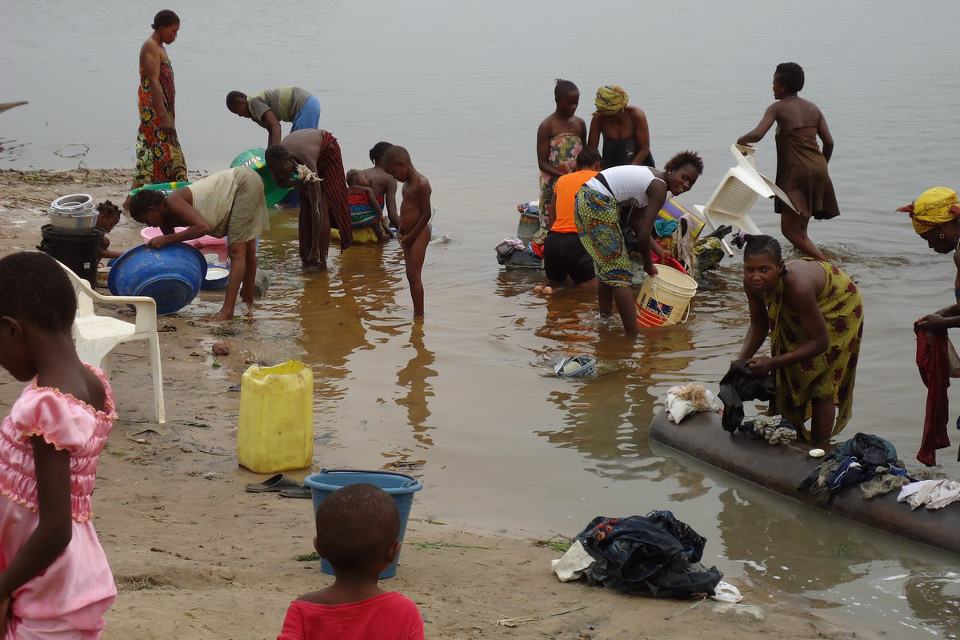In total, more than 30,000 cholera cases have been identified around the country since the epidemic started, while 230 people have succumbed to the disease since the beginning of the year, and more than 700 since June 2011. In addition to Kinshasa, the provinces of Orientale, North Kivu, Equateur and Bas Congo are currently experiencing outbreaks.
According to Nona Zicherman, chief of emergency operations in DRC for the UN Children's Fund (UNICEF), the epidemic has continued largely because of "poor hygiene, lack of awareness of the population about transmission mechanisms, very limited access to protected and monitored water sources and lack of sanitation infrastructure."
Kinshasa is one of Africa's most over-crowded cities, with a population of about 10 million. Poor drainage means stagnant, polluted water floods the city's streets when it rains, while huge piles of rubbish line many of its streets.
According to the International Water Association - a network of 10,000 global water professionals - 38 percent of Kinshasa residents have no access to piped water. The city has no proper sewerage system and no major facilities for the treatment of waste water and sludge.
"When cholera finds a situation of high population, poor sanitation and hygiene, it stays," said Dr Benoit Kebela Ilunga, the Ministry of Health's head of disease control. "The water infrastructure we have has not been improved since colonial times, yet the population has increased significantly; the supply is insufficient for today."
According to Kebela, while cholera in Kinshasa is unlikely to last long if properly controlled, in the east it has become endemic over the past decade.
"Studies show that the water around the Great Lakes such as Albert, Kivu and Tanganykia, and in cities such as Kalemie, Goma, Bukavu, Uvira and Bunia has become an environment for the multiplication of cholera," he said. "Coverage of potable water in endemic areas is less than 15 percent in endemic areas, so people use the lakes for most of their water supply."
The Ministry of Health, UNICEF and the World Health Organization have constructed and equipped cholera treatment centres [CTCs] in the most affected health zones in Kinshasa.
Addressing the disease
"While treatment is available in these health zones, the challenge is that cholera continues to spread to some new health zones, and as new cases are notified a need for the establishment of new CTCs, including delivery of equipment and training of personnel, in these neighbouring health zones will be necessary," said UNICEF's Zicherman.
Crucially, Zicherman said, it would be necessary to address the causes of cholera in order to curb the epidemic and prevent its resurgence.
| More on cholera in the DRC |
"The activities that can help reduce the spread of the epidemic start with epidemiological investigation to identify the most common pathways of contamination of the environment and transmission between people: places, areas, habits, rituals, beliefs, etc..."
She noted that emergency and medium- and long-term interventions to limit the spread of cholera needed to be developed.
"Immediate response includes disinfection of contaminated environments [such as] households, vehicles, and boats that transported cholera cases; appropriate management and disposal of dead bodies; and increasing access to safe water through chlorination and monitoring of water sources, distribution of soap, clean water receptacles, and other important hygiene items," she said.
"For the longer-term impact, behavioural change activities - awareness campaigns, communication, hygiene promotion, education programs - [and] construction or rehabilitation of water supply and sanitation facilities."
kr/am
This article was produced by IRIN News while it was part of the United Nations Office for the Coordination of Humanitarian Affairs. Please send queries on copyright or liability to the UN. For more information: https://shop.un.org/rights-permissions





